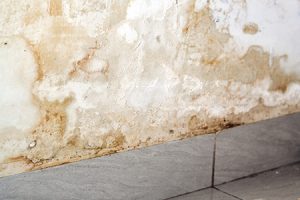They are making several good pointers regarding Preventing Water Damage in the Bathroom overall in this post which follows.

The restroom is incredibly at risk for wet build-up as well as potential water damage as a result of the regular use of water in it. This article offers basic evaluation techniques to help identifying water damages risks.
The frequent use water in the shower room makes it exceptionally prone for damp build-up and potential water damages. By evaluating it on a regular basis, you can minimize water associated damages.
The following collection of examinations is very easy to execute as well as ought to be done once in every 3 months in order to maintain your restroom in good shape and also to avoid potential water problems triggered by the bathtub, the shower, pipeline joints and also plumbing, sinks, cupboards, as well as the bathroom
Do not neglect performing these inspections and also be complete while doing them. Bear in mind that these simple inspections can conserve you a great deal of money by providing very early signs for water damage
Sinks and Cabinets
Sinks and closets are subjected to moisture and also humidity day-to-day as well as are typically overlooked. Evaluate on a regular basis under the sink as well as on the countertop over it. Repair any drip in the catch as it may suggest drain troubles. Browse the sink, slow-moving draining pipes may show a blocked drainpipe. Replace sink seals if they are cracked or loosened.
Bathtub and also Shower
The shower as well as bathtub call for special focus as well as upkeep. Inspect the tiles and also replace if fractured. Ensure that there is no missing out on grout in between the ceramic tiles. Check and change cracked caulking at joints where the wall surfaces meet the flooring or the bathtub. Obstructed drains and also pipes troubles will protect against the tub from drying out and might show major troubles below the bath tub. Speak with a specialist instantly to stop structural damages. Pay attention to discolorations or soft locations around the bathtub wall surfaces as they might indicate an interior leakage.
Plumbing
Signs for water damage are difficult to discover since many pipelines are installed inside the walls.
Pay unique focus to flooring as well as wall surfaces moisture as well as discolorations as they might indicate an undetectable plumbing trouble. Examine moisture levels in adjacent areas as well.
The Bathroom
The commode is an at risk water junction. Inspect the water lines as well as look for leaks around the toilet seat, in the hose pipe, as well as under the water container. If you detect any type of indications of dampness on the flooring around the toilet, check for leaks in the toilet edge and tank seals.
Understand that hanging bathroom dish antiperspirants raises the chances for clogs.
10 TIPS TO PREVENT WATER DAMAGE IN THE BATHROOM
The average household uses approximately 80-100 gallons of water per person per day. For a family of 4, that's almost 2,500 gallons of water a week! The largest portion of this consumption comes from bathroom use. Flushing the toilet uses the most water, followed by taking a shower or bath. With that much water running through the home, water damage in the bathroom is bound to happen. Knowing how to spot signs of a water leak is essential to preventing long-term damage. This guide provides you with tips to reduce the impact of water damage on your bathroom.
CAUSES OF BATHROOM WATER DAMAGE
Pipe breaks are the most common cause of water damage we see in our daily jobs. The age of a pipe plays a large role in a pipe break as well as corrosion. Over time, the metal begins to break down, allowing water to escape. Frozen pipe breaks are also a concern in the winter months. Toilet overflows caused by paper products or children flushing inappropriate items. Degraded caulking around the toilet or bathtub can allow water seepage, sometimes behind the fixture, into the subfloor or walls. Condensation forms when the water in a pipe is cooler than the air temperature. Beads of water form on the exterior of the pipes, sometimes so much so that the water begins to drip and pool below. Sink or shower backups created by poor drainage. HOW TO PREVENT WATER DAMAGE IN YOUR BATHROOM
Inspect your toilet supply line for worn or frayed hoses and replace them as needed. Winterize your plumbing to prevent a frozen pipe break. Use vent fans to prevent condensation that can lead to mold growth. Routinely check and replace degraded caulking around your toilet or bathtub. Increase the temperature in your toilet tank and insulate your pipes during the warm summer months to keep condensation from forming. Use child safety locks on the toilets. Flush only toilet paper. "Flushable" wet wipes are actually not good for your plumbing system. Additionally, feminine hygiene products should not be flushed. Prevent water from escaping the tub or shower. Make sure shower curtains are in good condition. Inspect shower doors and replace the seal strip if necessary. Wipe up any water that accumulates on the floor and use bath mats. Water left to sit can cause damage to the tiles and flooring. Refrain from using bath products containing heavy oils to avoid a clogged drain.

Hopefully you enjoyed our section on Preventing Water Damage in the Bathroom. Thanks so much for taking the time to browse our piece of content. Appreciated our article? Please share it. Help another person find it. I praise you for your time. Please come visit our website back soon.
Additional Information